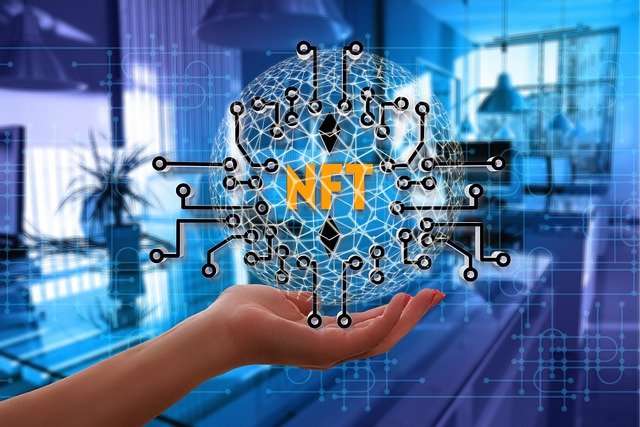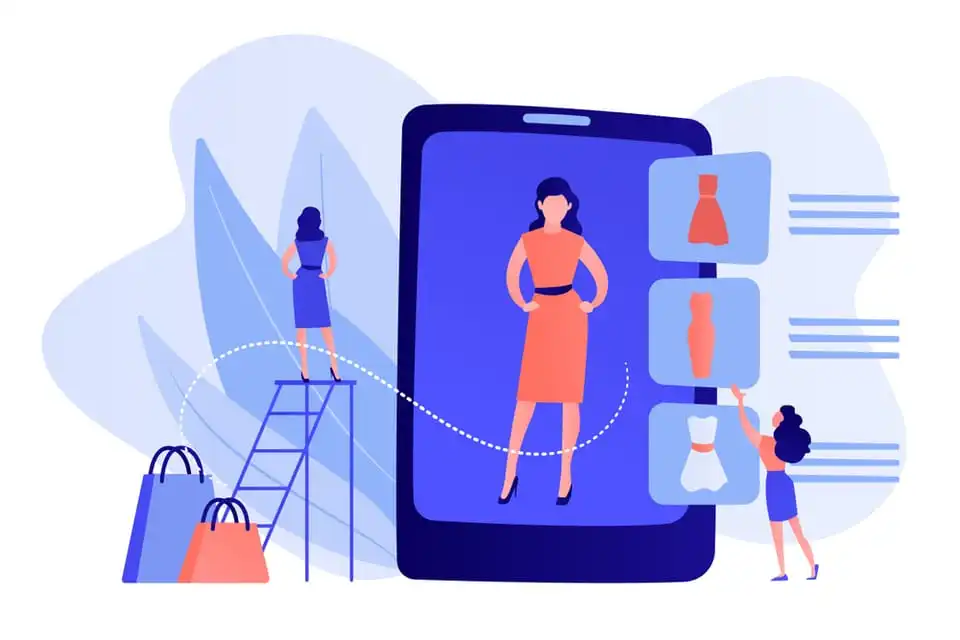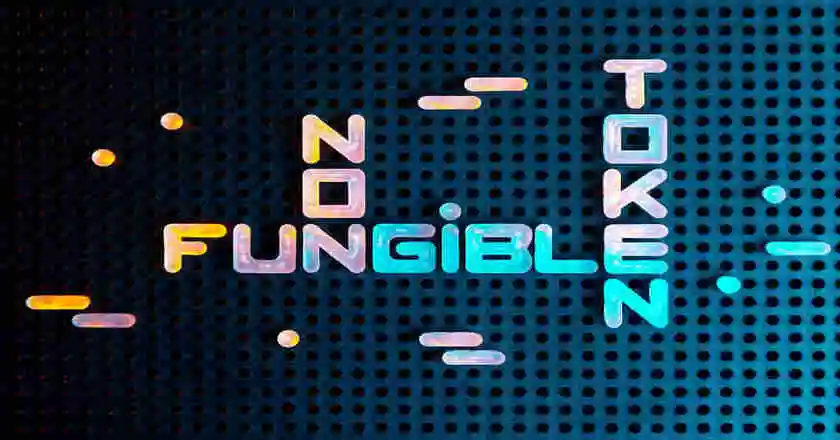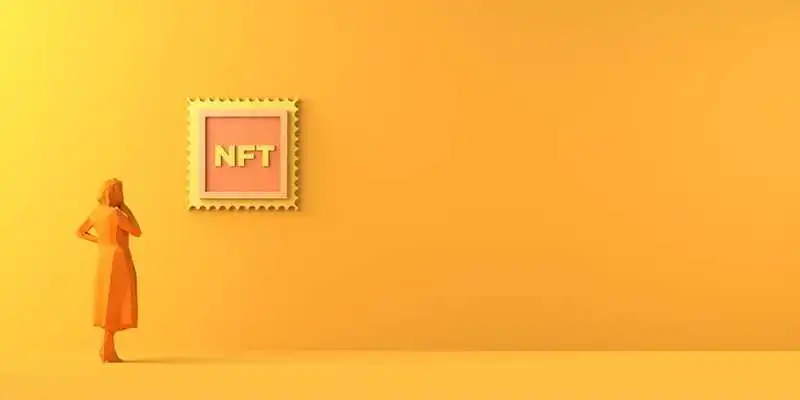How To Create an NFT Marketplace?
NFTs are a new concept that is shaking up the blockchain world. The NFT marketplace allows the listing, auctioning, and selling of NFTs. After you've created your NFT, it's time to understand how to create an NFT marketplace. This simple step-by-step tutorial will assist you here.

NFT or non-fungible tokens are digital collectibles got popular in the last couple of years. The number of NFTs has grown substantially in the market, and people sell them to earn massive money. It is not questionable now why people are talking and interested in knowing how to get these tokens and how this works.
1. What is an NFT Art?
The non-fungible token might be a music tone, video, photo, art, card, metaverse, or any digital asset. The answer to can I make my own NFT is yes; many youngsters show great interest in this market and creating several NFTs in multiple departments.
However, their listing, auction, and selling are possible with the NFT marketplace. After creating your NFT, it’s time to learn how to create an NFT marketplace. Here the clear and quick step-by-step guide will help you.
2. The Specific Characteristics of Non-fungible Tokens
- Authenticity: It is very easy to check the authenticity of a token, for instance, its owner information and the token's specificity.
- Indivisibility: NFTs cannot be divided into even smaller portions.
- Non-Exchangeable: The uniqueness of every token makes them non-interoperable as these cannot be exchanged.
- Tradability: There are serval crypto marketplaces, and NFTs can be traded on all. Thus, these unique trading systems bring endless opportunities for NFT owners as they can bid and sell their creativity in different markets.
- Liquidity: The liquidity of NFTs is increased instantly because they can be traded immediately. These digital tokens are shown to various buyers on several NFT marketplaces ranging from new players to hardcore individuals.
- Several Ecosystems: Interaction with many platforms is also possible due to ERC 721 Token and ERC 1155 (its better version). These standards make it possible to create non-fungible tokens for digital collectibles.
- Scarcity: Developers can put a hard layer on their digital property that hackers cannot access. Thanks to smart contractors as coders introduce specific properties that are locked once launched and cannot be changed. It also highlights the product shortage in that particular marketplace. Developers use this technique to enforce a limited edition of a specific digital asset. At the same time, the availability and supply of other ordinary arts remain countless.
- Programmability: NFTs, like other digital assets, are entirely programmable. Today, their design space opens endless opportunities, including complex mechanics, forging, crafting, and random development.
3. Key Findings of Non-Fungible Tokens
In the first quarter of 2021, the major NFT projects are increased by over 2100% more than the previous year, when total market growth was only 300%. Most NFTs were sold instantly, and their selling revenue also went above $70 million.
Here is the discussion on the key findings from the NFT Yearly Report 2020.
- The total active wallet number has grown to 97% approaching 222,117 who performed NFT transactions.
- The selling force (sellers) of NFTs reached 31504, which was 25,264 in 2019.
- The buying force, buyers (even those who purchased once), reached 74,529.
- Besides, the total number of NFT transactions exceeded $250 million, has grown by 299%.
4. What is an NFT Marketplace?
After getting a better idea about NFT, let's discuss the NFT marketplace; it is a place to display creativities, digital assets, and collectibles. It is also known as the NFT platform to mint and trade several NFTs, including art, video, photo, and other digital assets from various crypto domains. It is the right place for creative individuals to show their talent and get appreciation from a large audience. The minted NFT comes with special metadata that makes it unique. Ethereum blockchain network was the first where the non-fungible token was coined for the very first time. These tokens cannot be sold like fungible tokens as minted blockchain networks store them.
In short, the NFT marketplace offers a platform to trade NFT tokens in replacement for crypto, and these platforms are developed on several blockchain domains based on the trading requirement. The person lists their non-fungible tokens on the marketplace and places them as an open bid.
There are a few things to know before NFT set up and using an NFT marketplace.
- Firstly, you need a crypto wallet, and MetaMaskis considered one of the top wallets available in the market, and it eventually opens a gateway to dApps, Ethereum’s large ecosystem.
- Secondly, you need some cryptocurrencies to pay for the NFTs.
- Finally, you need an account for the NFT marketplace that takes only a few seconds with MetaMask wallet.
Some of the well-established and most popular NFT platforms are OpenSea, SuperRare, Rarible, and Foundation. These platforms allow purchasing and selling virtual assets, non-fungible tokens.
5. Considers Building NFT Features to Build Your Own NFT Marketplace
5.1. Perfect Search and Filter option
It is an exciting opportunity for crypto-interested investors to find the NFT of their interest via advanced searching techniques. Enter relevant details, such as artist name, listing status, price, payment method, and recently uploaded to filter their preferred digital collectibles.
5.2. Integrated Digital Wallets
It is highly recommended to have a safe facility for investors to store their digital assets. NTF buyers have countless options to select software to create NFT art and buy from wallets like Coinbase Wallet, Binance Wallet, MetaMask, Trust Wallet, Torus, WalletConenct, WalletLink, and Fortmatic. These Wallet secure assets employ end-to-end data encrypted service, two-factor authentication, and private keys.
5.3. Flexible Auction Facility
NFT marketplaces allow two ways of auctions for artists. It is up to them to choose whether single or multiple auctions. The online sale of crypto-collectibles is executed at a specific time, and it is up to the creator to fix or change the price listing tags. Artists must share their token's title, description, royalty percentage, payment way, and selling price.
5.4. Round the Clock Technical Assistance
Enterprise holders must consider their content creators' issues and try to resolve them on the earlier note. Moreover, NFT sellers and buyers should decide on bidding, listing, pricing, minting, and payment errors. They can also access the Support Centre via live chat, call, or email.
5.5. Instant Notification Sharing
Many investors bid through live auctions to purchase NFTs; however, they can also compel buyers by sending push notifications. These should include hot bids, brand-new collections, trending collections, and top sellers. It is also supportive for buyers to not miss any opportunity and make the right decision on time even when they haven't seen it before.
6. How to Create a NFT Marketplace? The Most Known Examples of NFT Tokens
When people come to know about NFT art, their first query is about the implementation and use cases of NFTs along with how much does it cost to post an NFT. Look at the most updated examples of non-fungible tokens.
- Texts / Messages: Tweets are the text form of NFTs. The first tweet gets paid for $2.9 million sold by jack Dorsey even he didn't have his company.
- NFT Digital Artworks: NFT tokens are also categorized by extraordinary digital artworks. "Every day: first 5000 days" was created by digital artist Beeple and sold for $69 million at Christie's auction.
- Gaming Characters: CryptoKitties are digital collectible art cute creatures sold for $172,000. A blockchain game was introduced with the same name in 2017 using the same characters. It was a great effort as the first time blockchain technology was used for entertainment. Another achievement was made by the Nyan Cat animation movie, which earned $590,200.
- Sports as NFT: When every field can be seen in NFT, how can sports stay out of its wonders? The NBA decided to introduce its NFTs while $400 million is already traded on the same line.
7. Basic Functionalities of How to Create NFT Marketplace Website
The working strategy of the NFT marketplace website is quite different from eCommerce websites. Here, digital collectibles are sold, brought, and introduced for auction. Before working on creating a NFT marketplace, it would be preferred to watch some basic features that might not be ignored.
7.1. Transparency in Transactions
Blockchain maintains transparency in transactions as it is used to build an NFT marketplace. It stores data in separate, interconnected blocks. When you pull data from one block, it automatically updates in other blocks. So, blockchain makes the payment process error-free and transparent for NFT marketplace websites.
7.2. NFT Token Management
eCommerce websites maintain online inventory to control the supply and demand of every product available on their website. Similarly, NFT marketplace websites work as they have their storefront to keep NFT tokens demand and supply chain.
7.3. Advanced Search Feature to Find product
Filters allow customers to find their desired product earlier than expected, hassle-free. It reduces the time between the NFT art section and finally buying it significantly.
7.4. Introduction of Digital Wallet
It is considered one of the most demanded features of an NFT marketplace website. It makes it possible to send, receive, and store NFTs and cryptocurrencies. Your website users must have options to connect their desired wallets.
7.5. Decentralized Transaction Procedure
Blockchain's decentralized nature also applies in the NFT marketplace system, where nothing is centralized. Transactional data is copied and spread across a computer network. Every new block added to the blockchain updates each computer network to show the changes in their system. Under a hacker attack, only one informational copy is prone to attack. You are not allowed to set rules like price conditions.
7.6. Opportunity to Buy, Sell, and auction
One of the top requirements must be considered if you are learning how to create an NFT marketplace as it implies an excellent auction system. The auction form must contain an expiry date as it will able users to control their bids better. Also, adding the watchlist option makes it possible to monitor the auction's current bid status.
8. How to Create an NFT Marketplace? Custom NFT Website Development of Ready-to-Use Solution
When you build NFT marketplace, you go through two options: custom development or a ready-to-use solution. It is less expensive and time-saving to focus on ready solutions and quickly develop your marketplace. As mentioned earlier, several top NFT marketplaces also provide you with security.
In contrast, create your own NFT marketplace by introducing extra features in the system on demand. So, it wouldn’t be a trouble to reach users by scaling your platform and boosting its features. Creating a custom platform secures sensitive information better, which is difficult for NFT marketplaces to comply with.
How to Develop an NFT Marketplace?
Before developing the NFT marketplace or hiring developers for it, keep your marketplace transparent, decentralized, and secure, as discussed above. It is also better to prevent fraud with smart contracts and a monetization model that informs users before time about changes in fee listing, selling, or buying rules.
Consider the following process to build NFT marketplace for your business.
8.1. Develop Strategy and Select Niche Wisely
It is nature’s rule that everything starts with a proper plan and should be seen through all possible angles, including competition, technology, demand, audience, and others. Firstly, select a blockchain to run your NFT marketplace on it. It all depends on your budget, and the options range from Ethereum, Polygon, Solana, and Defi Host. The next thing to focus on is the niche selection. Think what you want: developing from scratch or white-label NFT marketplace, how you will charge clients for NFTs, which standard to support, and likewise.
8.2. Start Designing the Platform’s Frontend by Planning its UI/UX Design
UI/UX design is one of the critical parts of creating a NFT marketplace. Its design and navigation must be so attractive that it makes the first impression and compel buyers and sellers to stay there for longer. However, keeping it unique and simple for everyone changes the game for you.
The front end of your NFT marketplace should also comprise a simple interface. Common technology stacks for frontend management are Backbone, Ember (language programmer), Angular.JS, React.js, and Viper, MVP, MVC, MVVM for architecture.
8.3. Backend and Smart Contract
The backend development is changed during the development of the NFT marketplace. It should be decentralized, so data authentication is done on the blockchain platform. NFT marketplace needs smart contracts as it uses crypto tokens, and wallets are required for trading. Further, the marketplace's backend development requires an auction mechanism.
The required technology stacks are:
- Blockchain: Binance Smart Chain, Solana, Defi Host, Polygon, Ethereum.
- Smart Contracts: Ethereum Virtual Machines (EVM), BSC Virtual Machines.
- Programming Languages: Python, Java, PHP.
- Token Standard: ERC1155, ERC721, BEP-1155, BEP-721.
- Cache: Redis, Memcached.
- Search Engines: Apache Solr, ElasticSearch.
- Database SQL/NoSQL: MariaDB, Oracle, PostgreSQL, MySQL, DynamoDB, Cassandra, MongoDB.
- DevOps: Terraform, WS CodeBuild, Jenkins, Gitlab CI.
8.4. User Interface Implementation
After UI/UX designing and deploying smart contracts with token development, it's time to link frontend and backend to create a fully developed marketplace. Now the developer focuses on user interface implementation that enables users to operate the market with every command.
The developer organizes the graphics to share the best interface of menu, tabs, and buttons for all operations, which makes the marketplace a product.
8.5. Testing the Developed NFT Marketplace
Contact Quality Analysts or NFT designer for hire for regular coding and performance testing to ensure that the marketplace is working rightly. After its launch, continuous monitoring is required to avoid bugs and to share never-compromised outperformance.
Testing plays a crucial role in NFT marketplace development to check the quality of products. It begins when all the core functionalities are developed and integrated on the platform’s backend. Here, the whole site is undergone various tests to locate flaws and resolve them.
The testing is based on two significant ways to enhance clients' loyalty, including verification and validation stages.
8.6. Releasing the Finally Developed Marketplace in Testnet
The NFT marketplace is shifted to testnet for monitoring performance in real-time once the testing ends. It includes platform speed checking, functioning, and receiving client reviews. This critical step must not be ignored as it decides how your first impression goes to the potential users as it checks the final product just before launch.
9. How Much Does It Cost to Make NFT Marketplace?
Mostly the cost depends on how attractive you made your UX/UI designing, security, authorization, the home page, user profile, product page, push up notifications, rating and reviews, shopping cart, NFT management and inventory, admin panel, Ethereum incorporation, buyer panel, and author panel.
However, it costs about $37.5k to $110k to develop an NFT marketplace for estimation. Customized web pages and demanded features can easily be created and added by an expert blockchain development company.
Get Started with NFT
The NFT market is growing fast with boosted marketing value. The network attracts many users because of its appealing characters and the significance of NFTs. Moreover, many investors have shifted their interests toward blockchain platforms due to their high graphics trends. The NFT market has the potential to grow even more elevated and offers you a promising future to create and run your NFT marketplace and make millions of dollars from other artworks.


